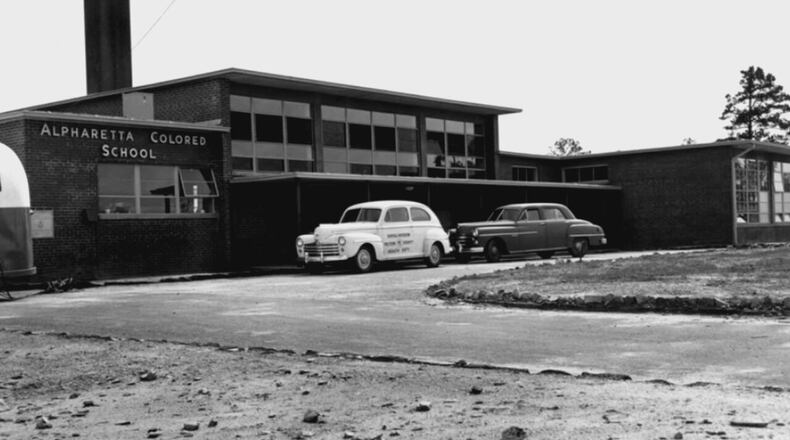The Fulton County School Board has approved the $6 million sale of the former school campus in Alpharetta that served Black children during segregation.
The former Bailey-Johnson School and gymnasium will become the site of an office development known as Garren on Kimball. Development plans show the school’s history will be reflected throughout 160,000 square feet of office space.
During a June 7 meeting, Fulton County school board members approved the sale of the property located at 154 Kimball Bridge Road. On Wednesday, commercial developer Bruce Fernald, who has led the project, said via email to The Atlanta Journal-Constitution that the parties are scheduled to close on the sale later this month.
Last fall, Fernald said that after remodeling the nearly $75-million modern office campus is expected to attract tenants in the technology industry looking for distinctive spaces.
The developer plans to preserve the steel sash windows and old brick façade on the former school building and gymnasium, each of which are 20,000 square feet, and will use the school’s history to create an inspirational office space. Plans include exposed concrete ceilings and loft space for some offices, and an additional 120,000-square-foot timber-frame office building.
A land disturbance permit was recently issued for construction, according to Alpharetta Community Development Director Kathi Cook.
Crescent Communities will build the office development, according to the project brochure.
The Kimball Bridge Road property currently isn’t in use. In recent years it was used as a Fulton schools maintenance facility.
Bailey-Johnson was the only school available to Black students in north Fulton that went beyond 7th grade. The school was open from 1950 to 1968 and was first called Alpharetta Colored School. The school was named after George Bailey, a blacksmith and shop owner, and Warren Johnson, a former slave and advocate for the education of Black children.
As a nod to the two men, their first names were combined for the “Garren” moniker, the project brochure says.
Fernald met with local historians for months to learn the history of Bailey-Johnson. Historian Charles Grogan attended the school in 1953 and provided Fernald with 611 photos taken of students engaging in activities that will be used to honor its history.
Grogan said when the office project is completed he plans to take his 3-year-old great-granddaughter to see how his former school is remembered at the remodeled campus.
“I want to show her where I went to school,” he said.
About the Author
The Latest
Featured


